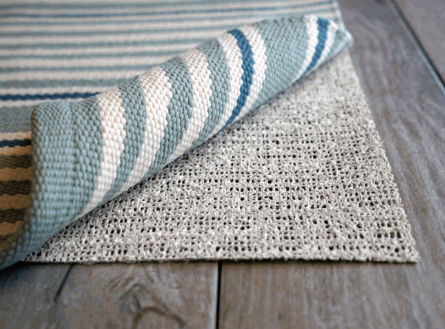Pressure washing is a widely utilised cleaning method known for its ability to restore various surfaces. However, when considering its application on rugs, the question of safety arises. This article examines the intricacies of pressure washing rugs, encompassing the various types of rugs, the associated risks, and the recommended safety measures for this cleaning technique. Additionally, it addresses alternative cleaning methods and provides guidance on maintaining rugs to ensure their enduring beauty. Engage with this content to discover effective strategies for preserving the appearance of your rugs.
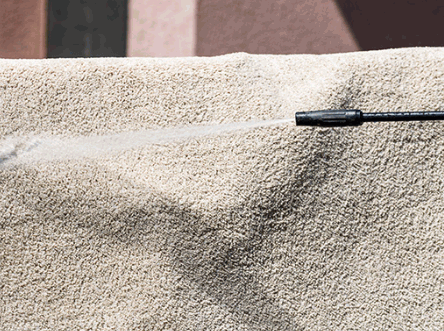
Pressure washing is an exceptionally effective cleaning technique that employs a pressure washer to remove dirt, grime, and stains from various surfaces. This method serves as an ideal solution for maintaining the cleanliness of outdoor mats and high-traffic areas.
It incorporates the use of specialised cleaning solutions to enhance the cleaning process, ensuring comprehensive dirt removal while preserving the integrity of outdoor materials. This approach is particularly favoured by homeowners and cleaning professionals seeking efficient and timely results, especially in the maintenance and care of mats.
Learn more: What Is Power Washing
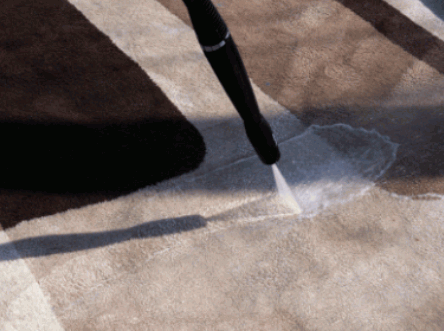
Rugs are available in a variety of types, each designed to meet specific aesthetic and functional requirements. These include:
Natural fibre rugs, crafted from materials such as wool and cotton, are recognised for their eco-friendliness. In contrast, synthetic rugs, including nylon and polyester, provide durability and stain resistance, making them ideal for high-traffic areas. Antique rugs not only possess historical significance but also showcase exceptional craftsmanship, adding a unique charm to any space.
This diversity in rug types underscores the wide range of options available in the market.
Natural fibre rugs are meticulously crafted from organic materials such as wool and cotton, recognised for their exceptional softness and durability. These attributes render them an excellent choice for enhancing both comfort and style in home décor.
Additionally, these rugs are eco-friendly, promoting sustainability while introducing a sense of warmth to living spaces, particularly in areas where gentle cleaning is essential to maintain their integrity.
One of the primary advantages of natural fibre rugs is their ability to improve indoor air quality by absorbing humidity and filtering out toxins, significantly contributing to a healthier home environment.
Natural fibre rugs offer a diverse array of aesthetic options, enabling homeowners to choose from a variety of textures and designs that complement different tastes and décors. They are particularly well-suited for low-traffic areas such as bedrooms or formal living rooms, where their delicate nature can be fully appreciated.
For maintenance and care, it is advisable to vacuum regularly using a soft-bristled attachment to prevent damage. For deeper cleaning, a mild detergent and a damp cloth can effectively remove stains without compromising the integrity of the fibres. These rugs perform best in temperature-controlled environments; therefore, it is prudent to keep them away from direct sunlight to prevent fading.
The versatility and eco-friendliness of natural fibre rugs make them a commendable addition to any home, seamlessly blending sustainability with style.
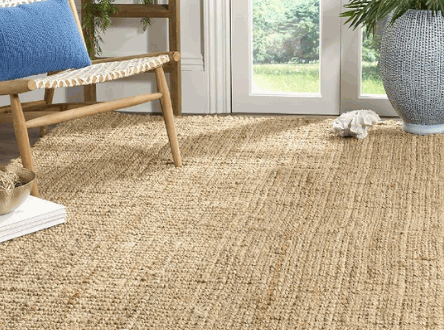
Synthetic rugs, crafted from materials such as nylon and polyester, are highly regarded for their durability and ease of maintenance, making them particularly suitable for high-traffic areas and homes with pets. These rugs generally possess stain-resistant properties, facilitating effective cleaning and upkeep—an important benefit for homeowners seeking practical yet aesthetically pleasing flooring solutions.
Owing to their capacity to endure daily wear and tear, synthetic rugs surpass natural fibre alternatives in terms of longevity. Unlike wool or cotton, which may readily exhibit dirt and necessitate frequent cleaning, synthetic options retain their appearance with minimal effort. Regular maintenance typically involves straightforward vacuuming and occasional spot treatment, rendering them an ideal choice for busy families.
Their resistance to fading and moisture damage makes them appropriate for both indoor and outdoor environments, offering versatility that enhances any space while significantly reducing maintenance requirements.
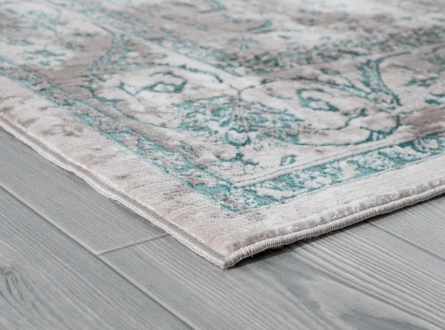
Antique rugs, distinguished by their intricate designs and historical significance, require specialised care and preservation techniques to maintain their aesthetic appeal and value, particularly in the case of Persian rugs. Due to their delicate nature resulting from age, it is imperative to consult cleaning professionals who specialise in the care of antique rugs to prevent any potential damage during cleaning and maintenance.
Preserving these timeless pieces not only pays tribute to their craftsmanship but also protects the cultural heritage they embody. The initial step in this preservation process involves understanding the specific materials used in the rug's construction—whether wool, silk, or a blend—since each material reacts differently to various cleaning techniques.
For instance, the use of gentle, chemical-free cleaning solutions is essential to avoid destabilising dyes or fibres. Recommended practices include:
Professional assistance is invaluable, as experts can identify the appropriate methods tailored to each rug's unique requirements, preserving its historical integrity while enhancing its visual appeal.
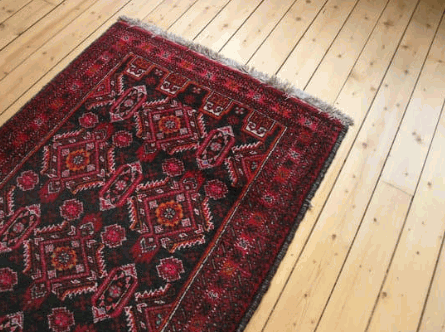
Using a pressure washer can be an effective method for cleaning outdoor rugs, provided it is done properly to prevent any damage to the fibres and structure of the rug.
Pressure washing can effectively remove dirt and stubborn stains; however, it is crucial to follow recommended cleaning methods and guidelines to ensure the rug's longevity and maintain its aesthetic appeal.
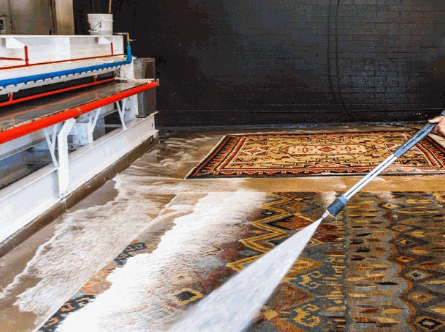
Although pressure washing rugs can be an effective cleaning method, it also presents certain risks that may damage the rug fibres if not performed with precision, particularly in high-traffic areas where wear and tear is more prevalent.
Understanding these risks is crucial for anyone contemplating this cleaning technique. The diverse range of rug materials, such as wool, synthetic fibres, and delicate silk, each responds differently to pressure washing. For example:
Moreover, the use of an incorrect nozzle or maintaining an improper distance from the rug can exacerbate these risks. Therefore, a thorough evaluation of the rug type and adherence to proper techniques are essential for preserving their integrity throughout the cleaning process.
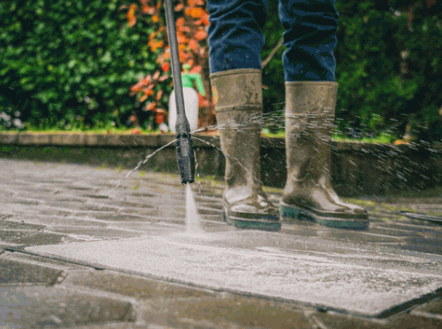
To effectively and safely pressure wash rugs, it is essential to employ a systematic approach that includes selecting the appropriate equipment and cleaning techniques. This ensures thorough cleaning while minimising the risk of damage to the fibres.
Begin by using a pressure washer with adjustable settings to ensure that the pressure levels are suitable for the specific materials of the rugs. Additionally, it is important to apply the correct pressure washer nozzles and maintain a safe distance during the cleaning process.
Selecting the appropriate pressure washer is essential for effective carpet cleaning. It is advisable to consider options such as the Sun Joe SPX3000, which offers adjustable pressure settings tailored to various carpet materials and cleaning requirements. Proper selection is crucial to prevent damage to delicate fibres while providing the necessary power for a thorough clean, in alignment with the recommended carpet cleaning methods.
When assessing pressure washers, prospective buyers should prioritise models that feature a range of pressure options to ensure versatility. For example, the Ryobi RY14122 and the Simpson Cleaning MSH3125-S deliver robust performance suited to different surfaces.
Key considerations include:
Ultimately, adhering to these criteria will facilitate optimal results in preserving the longevity and appearance of valuable carpets.
Utilising the appropriate pressure settings and pressure washer nozzle type is crucial when pressure washing rugs. A fan nozzle is commonly recommended for gentle cleaning, as it facilitates even water distribution and minimises the risk of damage to the rug fibres. It is advisable to begin with lower pressure settings to assess the rug's resilience before making any adjustments, adhering to specific cleaning recommendations to achieve optimal results in rug cleaning.
When contemplating pressure washing rugs, it is essential to acknowledge that different rug types demand tailored approaches to preserve their integrity and appearance. For instance, a delicate silk rug may require lower pressure and a finer nozzle, while a more durable synthetic rug can withstand higher pressure settings.
To initiate the cleaning process, one should first identify the fabric type. It is also important to adjust the nozzle angle to prevent concentrated streams that could harm the fibres and to maintain a safe distance to avoid exacerbating any existing wear.
By taking the necessary time to appropriately adjust these settings, one can effectively clean rugs without compromising their quality, ultimately ensuring a long-lasting and aesthetically pleasing finish.
Before fully pressure washing a rug, it is essential to conduct a test on a small area to assess how the fabric responds to the washing technique and pressure settings. This preliminary step helps prevent potential damage and ensures that the cleaning process is both effective and preserves the integrity of the rug, which is a critical aspect of rug maintenance.
Carrying out a test area examination not only protects against irreversible harm but also aids in identifying the rug's specific cleaning requirements. Different materials, such as wool, cotton, or synthetic fibres, may exhibit varying reactions to cleaning solutions and pressure levels, which is crucial for effective rug maintenance.
The following are important signs to observe during the testing process:
By carefully considering these factors during the test, one can make informed decisions that contribute to the longevity and aesthetic appeal of the rug.
When pressure washing rugs, it is essential to utilise a mild detergent to effectively remove dirt and stains without compromising the integrity of the rug's fibres. Products such as Palmolive Oxy or Dr. Bronner’s are suitable options for this cleaning task. Combining detergent with a thorough rinse is crucial to ensure that no residue remains, as any leftover soap can attract additional dirt and diminish the rug's longevity.
Selecting the appropriate type of detergent is vital for achieving optimal cleaning results.
When applying detergent during the pressure washing process, it is important to dilute it according to the manufacturer's instructions and evenly distribute it across the rug's surface.
Following the scrubbing process, one must emphasise the significance of rinsing thoroughly to eliminate any remaining soap residue. This step not only prevents the attraction of dirt but also assists in preserving the vibrant colours and texture of the rug over time.
A thorough rinsing process is essential following pressure washing to ensure the complete removal of detergent and dirt from the rug. This prevents any build-up that could compromise its appearance or structural integrity. Subsequently, the drying phase must be managed with care, ideally in a shaded area to avoid direct sunlight, which can lead to fading and damage. This careful approach is instrumental in effective rug maintenance.
To effectively rinse the rug, one should utilise a garden hose or appropriate equipment to gently spray the entire surface. This step is critical as it assists in dislodging any remaining dirt and soap residues that may adhere to the fibres. It is advisable to conduct this task thoroughly, allowing the water to flow freely and ensuring that the rinse penetrates deeply into the pile.
Upon completion of the rinsing process, the next phase involves the drying process, which is vital for rug care.
Effective drying is crucial to prevent the development of mould or mildew. After rinsing, it is important to gently remove excess water using a clean, absorbent towel or a squeegee. Establish a drying area that is well-ventilated to promote adequate air circulation around the rug. It is also beneficial to elevate the rug off the ground using a rack or similar method to enhance airflow underneath.
Adhering to these steps during the rinsing and drying process will not only maintain the rug's cleanliness but also extend its lifespan and preserve its vibrant colours over time, contributing to effective rug preservation.
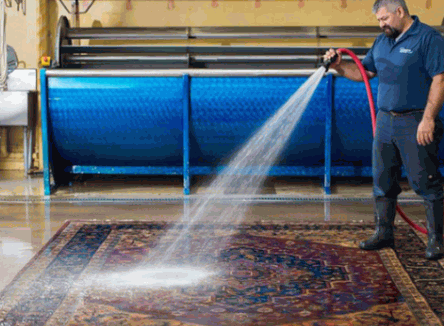
There are several alternatives to pressure washing rugs, including steam cleaning, hand washing, and using professional rug cleaning services. Each method offers distinct advantages and is suitable for different types of rugs and their respective conditions.
Steam cleaning effectively lifts dirt and allergens, while hand washing provides a gentler cleaning approach that can be customised to meet specific requirements. This method is often favoured for the cleaning of delicate upholstery.
Steam cleaning is a highly effective cleaning method that utilises hot steam to penetrate and lift dirt, allergens, and stains from rugs, making it a preferred option for maintaining cleanliness and hygiene.
This innovative process involves heating water to produce steam, which is subsequently applied to the fibres of the rug. This application allows the steam to break down stubborn grime and effectively eliminate unwanted particles. Due to its capability to sanitise without the use of toxic chemicals, steam cleaning is an excellent choice for individuals seeking eco-friendly cleaning practices.
To enhance the overall effectiveness of this method, it is advisable to adhere to best practices such as:
By incorporating steam cleaning into your maintenance routine, you not only preserve the aesthetic appeal of your rugs but also contribute to creating a healthier indoor environment.
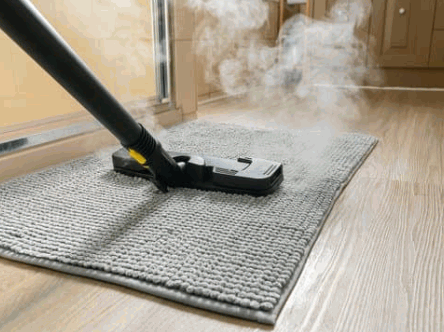
Hand washing represents a meticulous rug cleaning method that provides the necessary attention to detail, making it particularly suitable for delicate and antique rugs that require heightened care and preservation. This washing technique ensures that each section of the rug is treated appropriately, thereby minimising the risk of damage while effectively eliminating stains and dirt.
When contemplating hand washing, it is imperative to employ the correct techniques to safeguard the integrity of the fibres and dyes in the rug.
Additionally, utilising tools such as a vacuum cleaner with an upholstery attachment can aid in removing loose dirt prior to washing. When rinsing, it is essential to ensure that all soap residues are thoroughly eliminated, as residual soap can attract additional dirt. Ultimately, adhering to these practices will promote the long-term preservation of the rug while maintaining its cleanliness and vibrancy.
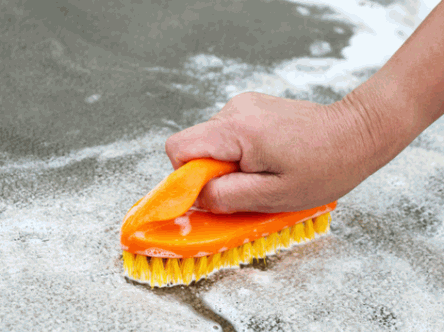
Engaging professional rug cleaning services is often the most effective approach for preserving the integrity and appearance of valuable or delicate rugs, including Persian rugs and stain-resistant rugs. These cleaning specialists possess the necessary expertise and tools required for thorough and effective cleaning. Their in-depth knowledge of various rug types and appropriate cleaning methods ensures that each rug receives the proper care, thereby extending its lifespan and maintaining its aesthetic appeal.
When clients enlist the services of such experts, they can anticipate a comprehensive evaluation of their rugs prior to the commencement of the cleaning process. This preliminary assessment allows clients to understand any specific challenges or requirements associated with their rugs. The professionals typically employ techniques that are both gentle and efficient, ensuring that no damage occurs—unlike the unpredictable outcomes often associated with DIY cleaning methods.
The following outlines the benefits of choosing professional services:
In contrast, DIY methods may result in potential mishaps, such as colour fading or fabric damage, underscoring the importance of entrusting this critical service to skilled professionals.
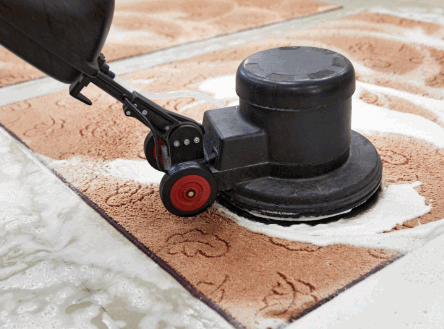
Regular maintenance and cleaning of rugs are crucial for preserving their appearance and extending their lifespan. This process includes practices such as frequent vacuuming, promptly addressing stains through spot cleaning, using an area rug beater, and rotating rugs to prevent uneven wear.
The use of rug underlay can also provide additional protection, ensuring that rugs remain in optimal condition. Furthermore, it is important to apply appropriate cleaning techniques tailored to the specific type of rug being maintained.
Regular vacuuming is a fundamental aspect of rug maintenance, essential for the effective removal of dirt and the prevention of build-up that can lead to more significant cleaning challenges over time. Adopting cleaning recommendations that include vacuuming at least once a week can significantly enhance the longevity and cleanliness of rugs.
Plus routine vacuuming, understanding the specific needs of various rug types is crucial for optimal care. For instance, natural fibre rugs necessitate gentler suction settings to prevent damage, whereas synthetic textiles can tolerate stronger suction. It is advisable to familiarise oneself with best practices related to vacuuming:
By incorporating these methods, individuals can maximise the effectiveness of their vacuum cleaner and promote a healthier living environment overall.
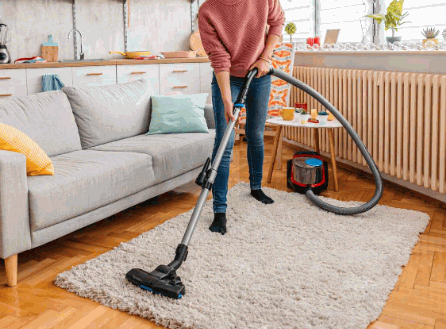
Addressing stains promptly is essential for effective rug care, as immediate spot cleaning can often prevent permanent damage and discolouration.
When confronted with various types of stains, it is crucial to act swiftly and employ the appropriate techniques. Begin by gently blotting the stain with a clean, dry cloth to absorb as much of the substance as possible.
Once the cleaning solution has been applied, utilise a soft-bristle brush or a clean cloth to gently work it into the fibres, taking care not to rub too vigorously, as this may damage the rug. Opt for cleaning products like Dr. Bronner’s or Palmolive Oxy. Rinse the area with clean water and blot until dry.
This meticulous approach helps preserve the rug's integrity while effectively addressing those stubborn stains.
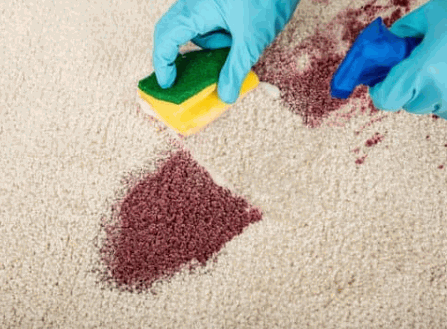
Rotating rugs periodically is a straightforward yet effective practice that helps in preventing uneven wear and tear, particularly in high-traffic areas. By changing the position of rugs every few months, one can facilitate more uniform exposure to sunlight and foot traffic, ultimately enhancing both their durability and appearance.
This practice not only preserves the aesthetic appeal of these decorative elements but also significantly extends their lifespan, thereby providing a greater return on investment for homeowners. When considering the frequency of rotation, many experts recommend doing so every three to six months. This approach ensures that all sections of the rug experience similar wear, especially for oriental rugs or those made from synthetic fibres, which may exhibit signs of fading or flattening over time.
Implementing this simple habit can make a significant difference in maintaining the vibrancy and comfort of rugs underfoot.
Utilising rug pads, particularly rubber-backed ones, is a fundamental aspect of rug maintenance, offering essential protection against slipping and wear while significantly extending the lifespan of rugs. These pads are instrumental in absorbing impact, preventing moisture accumulation, and maintaining the rug's position, thereby constituting a valuable component of any comprehensive rug care regimen.
When evaluating the various types of rug pads available, it becomes evident that each is engineered for specific functions, thereby enhancing the overall performance of the rug. For instance, felt pads provide cushioning, ensuring comfort underfoot while safeguarding against furniture indentation. In contrast, rubber pads are particularly effective in preventing slippage, especially on smooth surfaces where movement can be hazardous. Furthermore, natural fibre pads, constructed from materials such as jute or felt, offer eco-friendly advantages while delivering durability and breathability. Consider nylon liners for areas that require additional protection.
The benefits of selecting the appropriate rug pad include:
By thoughtfully choosing the most suitable rug pad, homeowners can ensure optimal protection, comfort, and care for their rugs, especially outdoor carpet options that may need extra durability against the elements.
